Asset Management
Note: If the EdgeOps section is not visible, click on and enable it from the Menu
options.
-
From the Edge Ops menu, click Fleet Management, and then
click Asset Management.

-
Choose between the following options. Note that both of them include the
capability of managing a fleet of Assets.
- On Bare Metal: To deploy the ECP directly on physical hardware by booting from a USB drive
- Pre-Installed OS: for standalone installation on an edge device.
Figure 1. 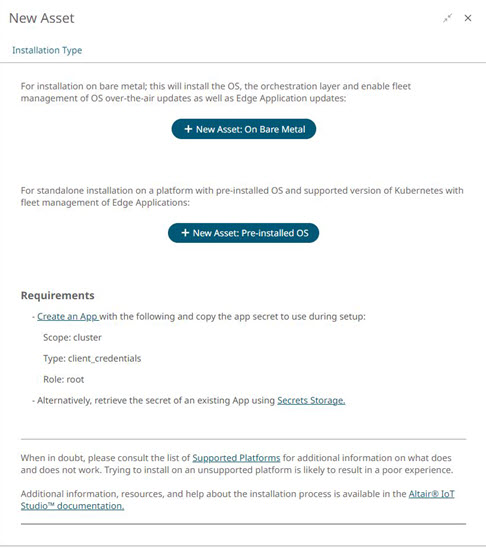
Create an Asset On Bare Metal
Important: Check the requirements before
installing on bare metal as you will first need to create an App (an App is a
set of permissions needed to ensure that the access to data is secure and that
the user is authorized to perform the request).
-
Under Requirements, click Create an App.
The app should have "cluster" as the scope and the type should be set to "client credentials." The Application Client ID and Secret ID are required in configuring the Image. Be sure to capture and save this information when creating the App.
Once you choose to create a new Asset on Bare Metal, the new ECP Image panel opens as an installable image needs to be created, downloaded, and flashed to a USB drive using balenaEtcher to install on bare metal.
-
Under Details, enter the following:
- Title (required): Image name
- Description (optional): Image description
- Software: choose one from the list
-
Under Build Params, enter the following:
- Public SSH Key(s) (each on a new line) for being able to SSH into the gateway on the local network using the "altair" username and the public SSH key of the gateway.
- App Client and App Client Secret: Select App client from the drop down and enter the App Client Secret.
- Fleet Identifier: A common identifier for all Assets in the Fleet
-
Click Save.
Figure 2. 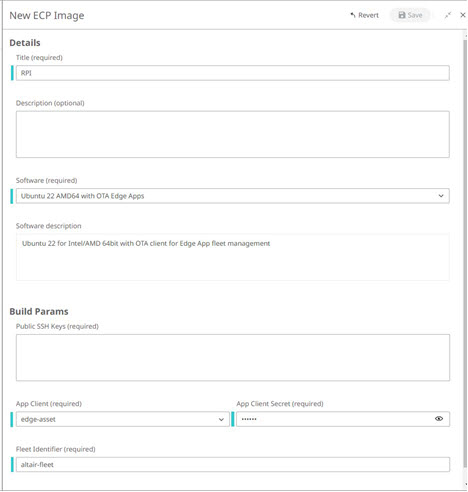
When the status is updated to EXECUTION_COMPLETE, the new Image is created and ready to be downloaded. Note this process can take few minutes.Figure 3. 
The table includes the following columns:- Title
- ID: Image ID
- Status
- Submitted
- Executing
- Execution_completed
- Created: Image creation date and time
- Expires: Time remaining for the image to be expired. Note: Images expire after 7 days.
- Download: You can download the Image by clicking the download icon in this column. You can also download an Image by clicking the Download action in the Detail pane.
- Flash the Image to a USB drive using balenaEtcher.
- During the installation process onto your gateway (i.e., the booting from the USB drive) API calls are made to automatically create the asset on the cloud. When installation is finished it will power off. When powered on, it will connect to the cloud automatically (after installing containers). Accessing the Asset Management section should display the new asset connected.
Create an Asset on a Pre-Installed OS
Important: Check the requirements before deploying
the pre-installed OS, as you will first need to create an App (an App is a set
of permissions needed to ensure that the access to data is secure and that the
user is authorized to perform the request).
-
Under Requirements, click Create an App.
The app should have "cluster" as the scope and the type should be set to "client credentials." The Application Client ID and Secret ID are required in configuring the Image. Be sure to capture and save this information when creating the App.
- Set a name for your Asset and enter a description, if desired.
- Choose the App Client ID from the drop down menu and enter the App Secret ID.
- Choose your fleet ID from the list or create a new one.
-
Verify that you have completed the appropriate preparation steps (installing
k3s and Ubuntu, etc.) and click Next.
Figure 4. 
-
Run the commands that appeared in Altair IoT Studio on the hardware's
shell, simply copy/paste if possible. These commands will allow you to deploy
the Management Server on the Asset and connect to Altair IoT Studio:
Figure 5. 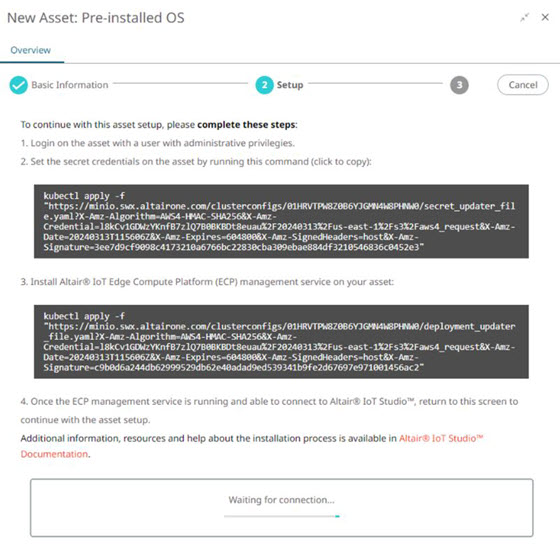
-
When the Asset has successfully established connection
with Altair IoT Studio, the following message will appear. Select the
Next button to continue.
Figure 6. 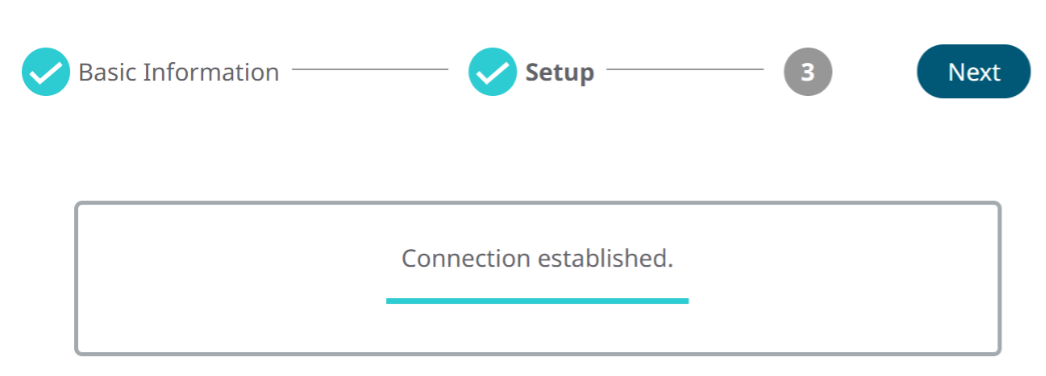 You will be taken then to the Asset's monitoring page. This is where you can see it's operating statistics and deployments.
You will be taken then to the Asset's monitoring page. This is where you can see it's operating statistics and deployments.Figure 7. 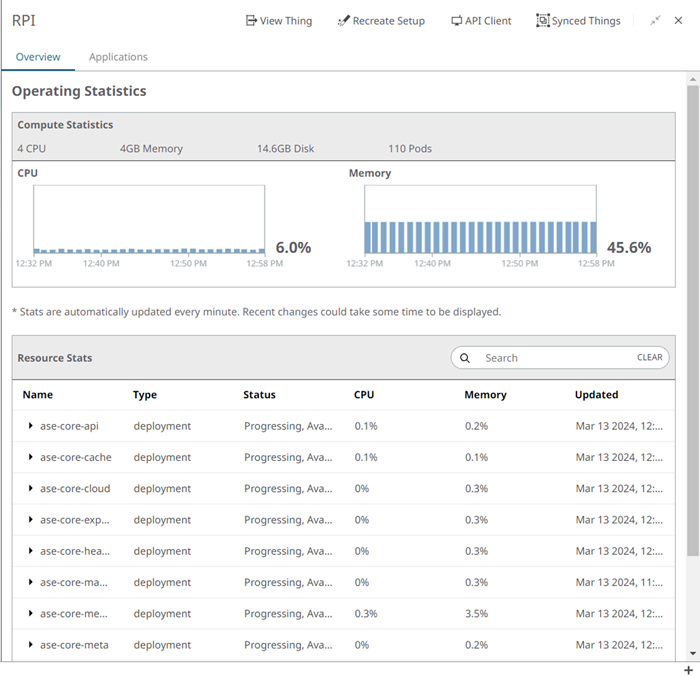 On the header you can find the following options:
On the header you can find the following options:- View Thing: Redirect to the Thing in AnythingDB that represents your asset. This Thing is automatically created. More details can be found in Developer Deep Dive.
- Recreate Setup: Recreate the configuration. Note this should only be used if there is no longer a valid edge device.
- API Client: Opens the API Client pane where REST API calls to the Edge Compute Platform running on the Asset can be made. More info can be found in Using the Cluster API Inspector.
- Synced Things: Any Thing created in AnythingDB exists on the cloud only. To use the Thing at the Edge it needs to be synchronized to the Edge. Use this option to do the synchronization. More info can be found in Sync Things.